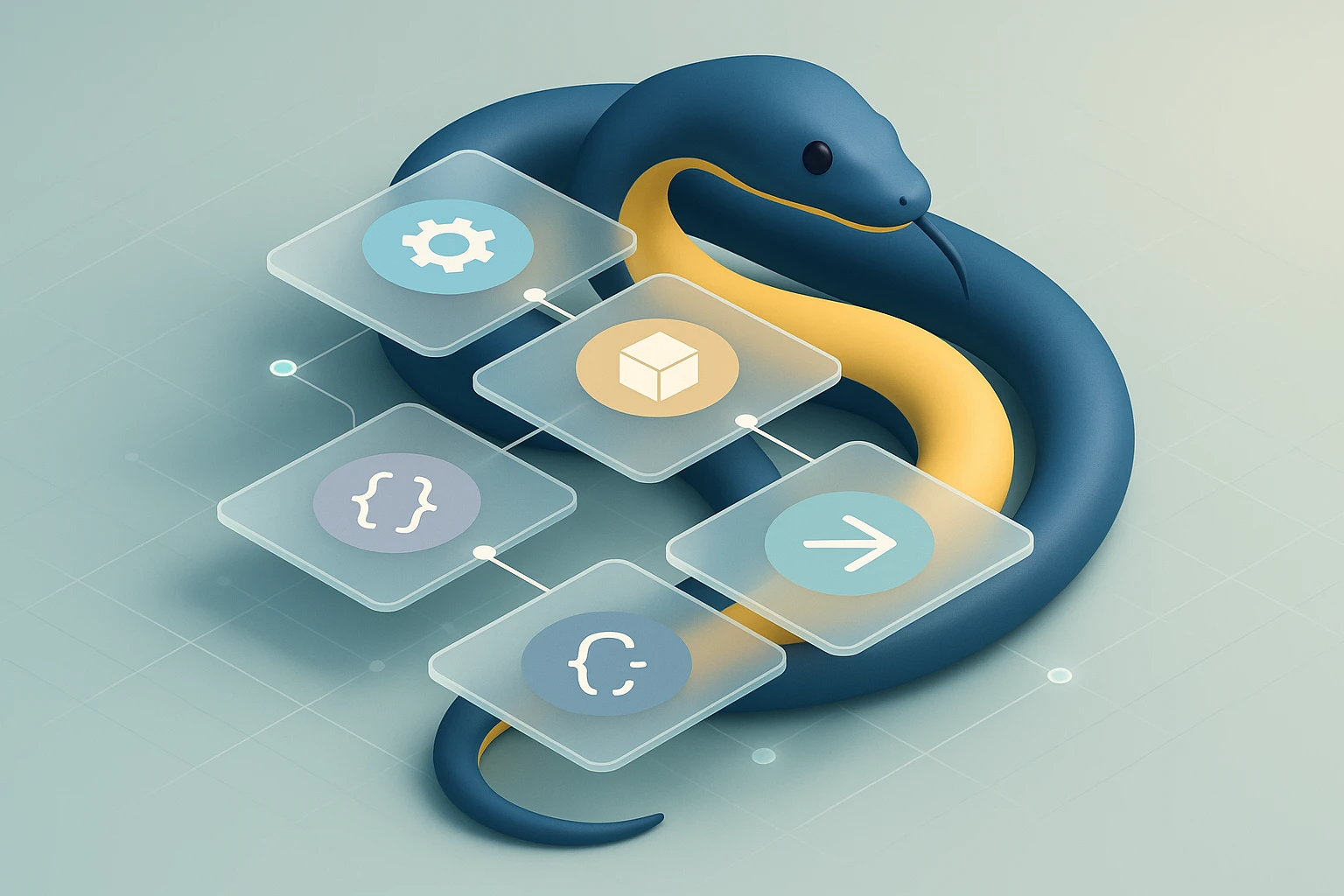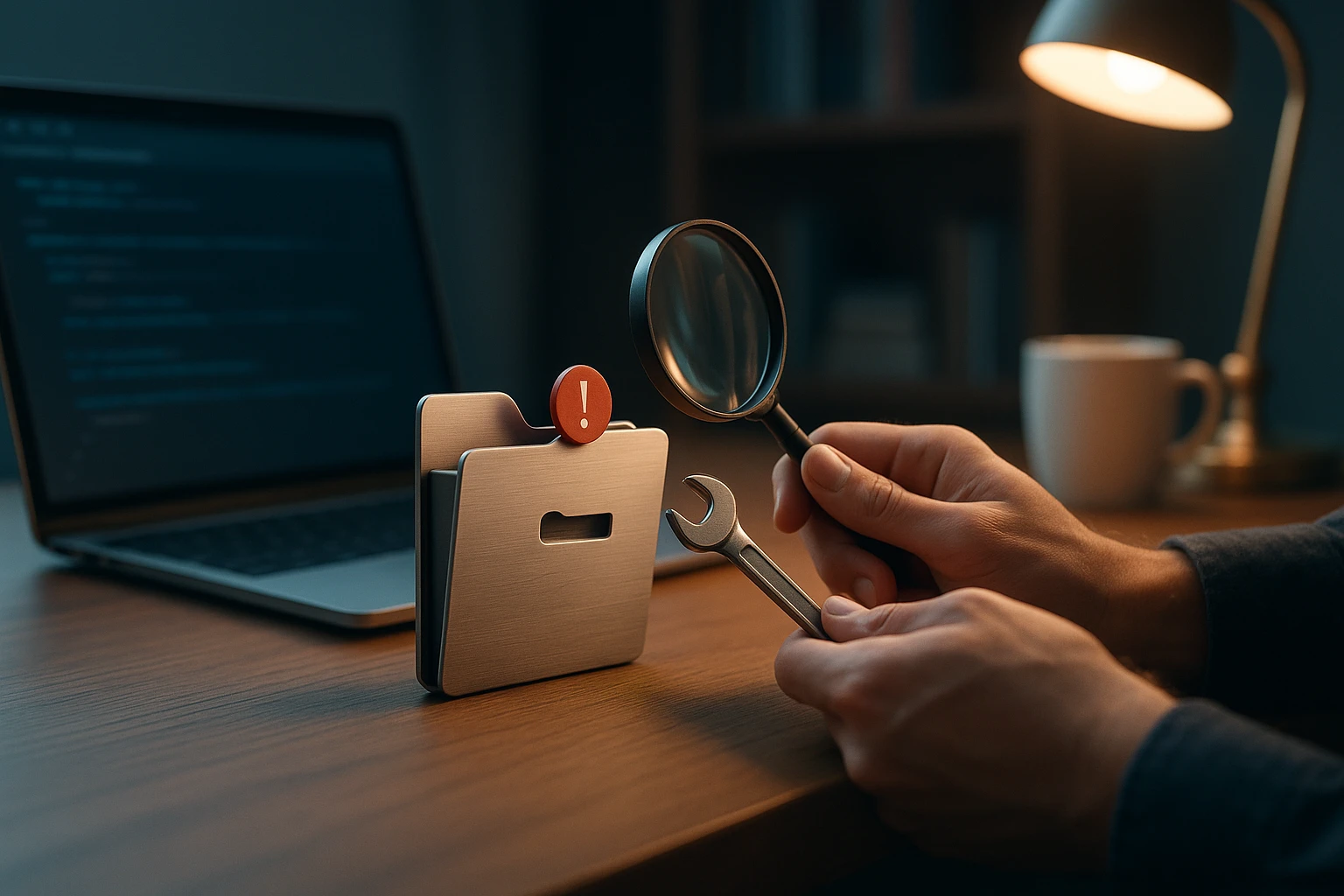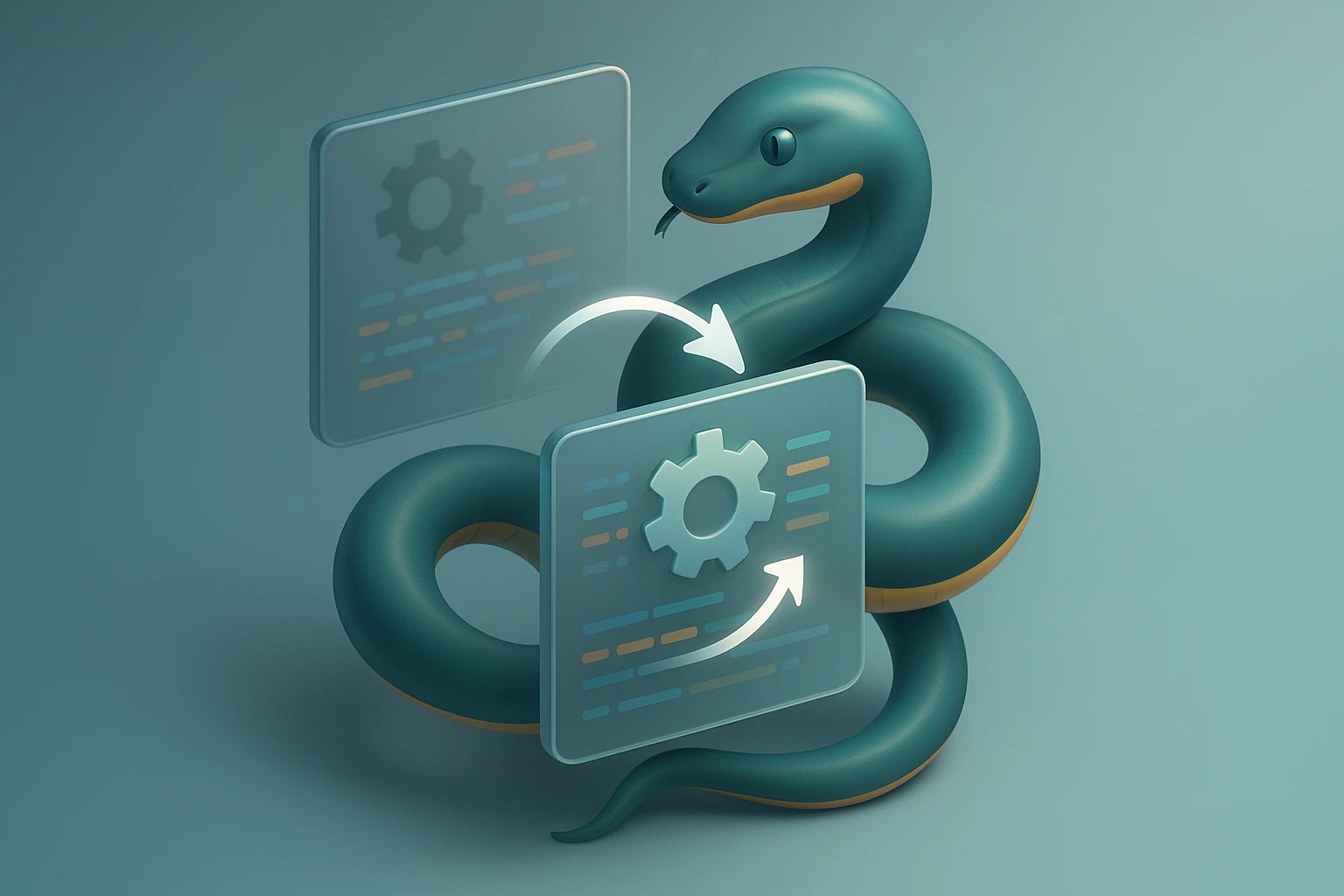What Is a Python Module?

What Is a Python Module?
Every developer reaches a point where their code becomes too complex to manage in a single file. Functions pile up, variables multiply, and suddenly you're scrolling through thousands of lines trying to find that one piece of logic you wrote last week. This is where understanding modules becomes not just helpful, but essential for your growth as a Python programmer. The ability to organize, reuse, and share code efficiently separates hobbyist scripts from professional software development.
A Python module is essentially a file containing Python definitions, functions, classes, and statements that can be imported and used in other Python programs. Think of it as a toolbox where you store related tools together, making them easily accessible whenever you need them. This concept extends beyond simple organization—it's about building scalable applications, collaborating with other developers, and leveraging the vast ecosystem of pre-built solutions that the Python community has created.
Throughout this exploration, you'll discover how modules work under the hood, learn practical techniques for creating and using them effectively, and understand the broader ecosystem of packages and libraries that build upon this foundation. Whether you're looking to clean up your existing code, contribute to open-source projects, or simply understand what happens when you type import numpy, this comprehensive guide will equip you with the knowledge and confidence to work with Python modules professionally.
Understanding the Fundamentals of Python Modules
At its most basic level, a module is simply a Python file with a .py extension. When you create a file called calculator.py and define functions inside it, you've created a module. The filename becomes the module name, and everything defined within that file becomes accessible to other parts of your program through the import mechanism. This seemingly simple concept forms the backbone of Python's approach to code organization and reusability.
The power of modules lies in their ability to create namespaces. When you import a module, Python creates a separate namespace for that module's contents, preventing naming conflicts and keeping your code organized. If you have a function called process() in both your main program and an imported module, they won't interfere with each other because they exist in different namespaces. This namespace isolation is crucial for building large applications where different components might naturally use similar naming conventions.
"The module system is Python's answer to code organization, allowing developers to break down complex problems into manageable, reusable components that can be tested, maintained, and shared independently."
How Python Locates and Loads Modules
When you execute an import statement, Python doesn't randomly search your entire computer for the module. Instead, it follows a specific search path defined in sys.path, which is a list of directory locations. Python checks these locations in order: first the directory containing the script being run, then directories listed in the PYTHONPATH environment variable, and finally the installation-dependent default paths where standard library modules reside.
The loading process involves several steps that happen behind the scenes. Python first searches for the module, then compiles it to bytecode (creating those .pyc files you might have noticed in __pycache__ directories), and finally executes the module's code to create the namespace. This compilation step is an optimization—the next time you import the same module, Python can use the cached bytecode if the source hasn't changed, making subsequent imports faster.
| Search Location | Priority | Description | Use Case |
|---|---|---|---|
| Current Directory | Highest | The directory containing the script being executed | Project-specific modules and local development |
| PYTHONPATH | Medium | Environment variable with additional directories | Custom module locations and development environments |
| Standard Library | Medium-Low | Python's built-in modules directory | Core Python functionality like os, sys, datetime |
| Site-Packages | Low | Third-party installed packages | Packages installed via pip like requests, pandas |
Types of Modules in the Python Ecosystem
Python modules come in several flavors, each serving different purposes in the development ecosystem. Built-in modules are written in C and compiled directly into the Python interpreter. These modules, like sys and builtins, provide access to interpreter internals and fundamental operations. They're always available without any installation and offer the fastest performance since they're implemented at the interpreter level.
Standard library modules ship with Python but are written in Python itself. These modules cover an enormous range of functionality, from file I/O (os, pathlib) to internet protocols (urllib, http) to data structures (collections, itertools). The standard library represents Python's "batteries included" philosophy, providing robust, tested solutions for common programming tasks without requiring external dependencies.
Third-party modules are created by the Python community and distributed through the Python Package Index (PyPI). These range from small utility libraries to massive frameworks like Django or scientific computing suites like NumPy. Installing these modules typically involves using pip, Python's package installer, which handles downloading, dependency resolution, and installation automatically.
User-defined modules are the ones you create yourself for your projects. These might be simple utility files with helper functions or complex modules that form the core of your application's architecture. Understanding how to structure and organize these modules effectively is key to maintaining clean, professional codebases.
Creating and Using Modules Effectively
Creating your first module is remarkably straightforward, but doing it well requires understanding some important conventions and best practices. The process starts with simply creating a Python file and adding your code to it. However, professional module development involves considerations about structure, documentation, and how your module will be used by others—or by your future self.
Building Your First Module
Let's start with a practical example. Create a file named text_tools.py with functions for common text operations. The key is to think about what functionality logically belongs together. Text manipulation functions make sense in one module, while database operations would belong in another. This logical grouping makes your code intuitive to use and maintain.
Inside your module, you can define functions, classes, and variables. It's good practice to include a module-level docstring at the very top of the file explaining what the module does and how to use it. This documentation becomes accessible through Python's help system and is invaluable for anyone using your module later. Each function should also have its own docstring explaining parameters, return values, and any exceptions it might raise.
"Well-structured modules are self-documenting. The organization, naming, and documentation should make the module's purpose and usage immediately clear without requiring deep code inspection."
Import Techniques and Best Practices
Python offers several ways to import modules, each with its own use cases and implications. The basic import module_name statement imports the entire module, requiring you to use the module name as a prefix when accessing its contents. This approach keeps your namespace clean and makes it immediately obvious where each function or class comes from when reading the code.
The from module_name import specific_item syntax allows you to import specific functions, classes, or variables directly into your current namespace. This can make your code more concise, especially if you're using certain functions frequently. However, it comes with risks—you might accidentally shadow built-in names or create confusion about where a function originates. Use this approach judiciously, typically for well-known functions or when you're importing just one or two items.
- ✅ Use explicit imports for clarity:
import osis better thanfrom os import *because it makes dependencies obvious and prevents namespace pollution - ✅ Alias long module names:
import numpy as npis a widely accepted convention that improves code readability while maintaining clarity - ✅ Group imports logically: Standard library imports first, then third-party libraries, then local modules, separated by blank lines
- ✅ Avoid circular imports: Structure your modules so they don't import each other, which can cause confusing errors and indicates poor architecture
- ✅ Use absolute imports in packages: They're more explicit and work better with modern Python tooling and package managers
The Special __name__ Variable
Every module has a built-in attribute called __name__ that Python sets automatically. When a file is run directly as a script, __name__ is set to "__main__". When that same file is imported as a module, __name__ is set to the module's name (the filename without the .py extension). This distinction allows you to write code that behaves differently depending on whether it's being imported or executed directly.
The common pattern if __name__ == "__main__": at the bottom of a module lets you include test code, example usage, or a command-line interface that runs only when the file is executed directly. This makes your modules more versatile—they can function as both importable libraries and standalone scripts. It's a hallmark of professional Python code and demonstrates understanding of how the module system works.
| Import Style | Syntax Example | Advantages | Considerations |
|---|---|---|---|
| Basic Import | import math |
Clean namespace, clear origin of functions | Requires prefix for every use (math.sqrt) |
| Aliased Import | import pandas as pd |
Shorter code while maintaining clarity | Requires learning common conventions |
| Selective Import | from datetime import datetime |
Direct access without prefix | Can cause naming conflicts if not careful |
| Wildcard Import | from module import * |
Imports everything at once | Strongly discouraged—pollutes namespace |
Advanced Module Concepts and Package Architecture
Once you understand basic modules, the next level involves organizing multiple modules into packages and understanding the more sophisticated features of Python's import system. Packages are simply directories containing multiple module files and a special __init__.py file that tells Python to treat the directory as a package. This hierarchical organization is essential for large projects and is how major frameworks like Django and Flask structure their codebases.
Package Structure and Organization
A well-organized package reflects the logical structure of your application. The __init__.py file in each package directory serves multiple purposes: it marks the directory as a package, can contain initialization code that runs when the package is imported, and can control what gets imported when someone uses from package import * through the __all__ variable. Modern Python (3.3+) introduced namespace packages that don't require __init__.py, but explicit packages with this file remain the standard for most projects.
Consider a web application package structure: you might have separate subpackages for models, views, controllers, utilities, and tests. Each subpackage contains related modules, creating a clear hierarchy that makes navigation intuitive. This structure also enables relative imports within the package, allowing modules to reference their siblings or parents without needing to know the full package path.
"Package architecture is about creating intuitive boundaries in your code. Each package should represent a cohesive unit of functionality that can be understood, tested, and maintained independently."
Module Caching and Reloading
Python caches imported modules in sys.modules, a dictionary mapping module names to module objects. This means that if you import the same module multiple times in different parts of your program, Python only loads it once and returns the cached version for subsequent imports. This optimization improves performance but can cause confusion during development when you're modifying modules and expecting changes to appear immediately.
During interactive development or debugging, you might need to reload a module to see changes without restarting your Python session. The importlib.reload() function allows this, but it comes with caveats: objects created from the old module version don't automatically update, and reloading can cause subtle bugs if not done carefully. In production code, reloading is rare—proper application architecture typically handles code updates through restarts or deployment processes.
Module Attributes and Introspection
Modules are objects in Python, and like all objects, they have attributes that provide information about them. The __file__ attribute shows where the module's source file is located on disk. The __doc__ attribute contains the module's docstring. The __dict__ attribute is a dictionary containing all the module's namespace contents. These attributes enable powerful introspection capabilities, allowing programs to examine and even modify modules at runtime.
The dir() function lists all attributes of a module, which is incredibly useful when exploring unfamiliar libraries. Combined with the help() function, which displays detailed documentation, these tools make Python highly discoverable. Professional developers leverage these introspection capabilities to understand third-party code, debug issues, and build dynamic systems that adapt based on available modules.
"Understanding module attributes and Python's introspection capabilities transforms you from someone who just uses modules to someone who truly understands how the Python runtime organizes and manages code."
Real-World Module Patterns and Best Practices
Theory only takes you so far—understanding how modules are used in production systems reveals patterns and practices that separate functional code from maintainable, professional software. Real-world applications typically involve dozens or hundreds of modules organized into packages, with careful attention to dependencies, initialization order, and interface design.
Dependency Management and Virtual Environments
Professional Python development invariably involves managing dependencies between modules and packages. Different projects require different versions of libraries, and installing everything globally quickly leads to version conflicts and "dependency hell." Virtual environments solve this by creating isolated Python installations for each project, with their own set of installed packages. Tools like venv (built into Python) and virtualenv make this process straightforward.
The requirements.txt file has become the de facto standard for documenting project dependencies. This simple text file lists all required packages and their versions, allowing anyone to recreate your environment with a single pip install -r requirements.txt command. More sophisticated tools like Poetry and Pipenv provide enhanced dependency resolution and lock files that ensure truly reproducible builds across different systems and times.
Module Design Principles
Effective module design follows several key principles. Cohesion means that everything in a module should be related—if you find yourself constantly importing only one or two items from a module, it might be too broad and should be split. Coupling refers to how dependent modules are on each other—lower coupling is better because it makes modules more reusable and easier to test in isolation.
The single responsibility principle applies to modules just as it does to classes and functions. Each module should have one clear purpose. A module that handles both database connections and email sending is doing too much and should be split. This principle makes your code easier to understand, test, and maintain because each module's scope is limited and well-defined.
- 🎯 Keep modules focused: A module should do one thing well rather than many things poorly
- 🎯 Design clear interfaces: Think carefully about what you expose publicly versus what should remain internal implementation details
- 🎯 Document dependencies: Make it obvious what other modules or packages yours requires
- 🎯 Version your modules: Include version information using
__version__attribute for tracking and compatibility - 🎯 Write module-level tests: Each module should have corresponding tests that verify its functionality in isolation
Common Pitfalls and How to Avoid Them
Even experienced developers encounter module-related issues. Circular imports occur when two modules import each other, creating a dependency loop that Python can't resolve. The solution usually involves restructuring your code—often the circular dependency indicates that shared functionality should be extracted into a third module that both can import.
Name shadowing happens when you create a module with the same name as a standard library module. If you create a file called random.py in your project, Python will import your file instead of the standard library's random module, causing confusing errors. Always check that your module names don't conflict with built-in or commonly used library names.
"The most maintainable code isn't the cleverest—it's the code that makes its intentions obvious, organizes related functionality logically, and handles dependencies explicitly."
Module Documentation Strategies
Documentation isn't just about writing docstrings—it's about creating a complete picture of how your module should be used. A good module includes a detailed module-level docstring explaining its purpose, key classes and functions, and typical usage examples. Each public function and class should have comprehensive docstrings following a consistent format like Google style, NumPy style, or reStructuredText.
Beyond docstrings, consider creating a separate README file for significant modules or packages. This file can include installation instructions, detailed examples, API documentation, and troubleshooting guides. For larger projects, tools like Sphinx can automatically generate professional documentation websites from your docstrings and additional documentation files, making your module accessible to a wider audience.
Integrating with the Python Ecosystem
Understanding modules in isolation is only part of the picture. Professional Python development involves working within the broader ecosystem of packages, understanding distribution mechanisms, and knowing how to share your modules with others. The Python Package Index (PyPI) hosts hundreds of thousands of packages, and knowing how to both consume and contribute to this ecosystem is essential for modern development.
Working with Third-Party Packages
Third-party packages extend Python's capabilities enormously. Data scientists rely on NumPy, Pandas, and scikit-learn. Web developers use Django, Flask, or FastAPI. DevOps engineers work with Ansible and Fabric. Understanding how to find, evaluate, and integrate these packages into your projects is crucial. The PyPI website provides package information, but tools like pip search (currently disabled due to abuse) and websites like libraries.io or GitHub's explore feature help discover relevant packages.
When evaluating a package, consider several factors beyond just functionality. Check the last update date—actively maintained packages are more likely to work with current Python versions and have security patches. Look at the number of contributors and GitHub stars as rough indicators of community support. Read the documentation quality, as poor documentation often indicates poor code quality. Check the license to ensure it's compatible with your project's requirements.
Creating Distributable Packages
When your module grows beyond personal use, you might want to distribute it to others. Modern Python uses the setuptools library and setup.py or pyproject.toml files to define package metadata, dependencies, and build instructions. These files tell pip how to install your package, what other packages it requires, and what version of Python it needs.
The process of publishing to PyPI involves creating source distributions and wheels (pre-compiled packages), testing them thoroughly, and uploading them using tools like twine. Many developers start by publishing to Test PyPI, a separate instance for testing the upload process without affecting the main package index. Once comfortable, publishing to the real PyPI makes your package available to millions of Python developers worldwide through a simple pip install your-package-name command.
Module Security Considerations
Security is increasingly important in the module ecosystem. Malicious packages occasionally appear on PyPI with names similar to popular packages (typosquatting), hoping developers will accidentally install them. Always verify package names carefully and check the package's homepage and documentation before installing. Tools like pip-audit can scan your installed packages for known security vulnerabilities.
When creating your own modules, be mindful of security implications. Don't hardcode credentials or API keys—use environment variables or configuration files that aren't committed to version control. Be careful with dynamic imports and eval()-like constructs that execute arbitrary code. Validate and sanitize any external input your module processes. These practices protect both you and anyone who uses your modules.
Frequently Asked Questions
What's the difference between a module and a package in Python?
A module is a single Python file containing code, while a package is a directory containing multiple modules and a special __init__.py file. Think of a module as a single book and a package as a library containing multiple books. Packages allow you to organize related modules hierarchically, making large projects more manageable. You can import from both modules and packages, but packages provide additional organizational structure for complex applications.
Can I import a module from a different directory?
Yes, there are several approaches. The most straightforward is adding the directory to sys.path before importing, though this is generally considered a workaround. Better solutions include properly structuring your project as a package, installing your module in development mode using pip install -e ., or setting the PYTHONPATH environment variable. The best approach depends on your specific situation—temporary scripts might use sys.path manipulation, while larger projects should use proper package structure.
Why do I see __pycache__ directories and .pyc files?
These are Python's compiled bytecode files. When you import a module, Python compiles it to bytecode (an intermediate representation) and caches it in these files to speed up subsequent imports. The __pycache__ directory keeps these files organized and separate from your source code. You can safely delete these directories—Python will recreate them as needed. Most developers add __pycache__ to their .gitignore files since these files are generated automatically and don't need version control.
How do I handle circular imports between modules?
Circular imports usually indicate a design problem where two modules are too tightly coupled. The best solution is refactoring—extract the shared functionality into a third module that both can import. If refactoring isn't immediately possible, you can work around circular imports by moving import statements inside functions rather than at the module level, so they only execute when needed. However, this is a temporary fix; proper code organization is the real solution.
What should I include in __init__.py files?
The __init__.py file can be empty (simply marking the directory as a package) or contain initialization code for the package. Common uses include importing key classes or functions to make them available at the package level, defining __all__ to control what's exported with wildcard imports, setting up package-level configuration, or running initialization code needed by the package's modules. Keep it minimal—heavy initialization can slow down imports and make your package harder to use.
How do I make my module work with both Python 2 and Python 3?
While Python 2 reached end-of-life in 2020, some legacy systems still require compatibility. The six library provides compatibility utilities, and the __future__ module allows importing Python 3 behavior into Python 2. However, maintaining dual compatibility adds significant complexity. Unless you have specific requirements for Python 2 support, focusing exclusively on Python 3 (preferably 3.7+) is strongly recommended for new projects.
Should I use absolute or relative imports in packages?
Absolute imports (like from mypackage.submodule import function) are generally preferred because they're explicit and work consistently regardless of how the module is run. Relative imports (like from .submodule import function) are shorter but only work when the module is part of a package and can be confusing. PEP 8, Python's style guide, recommends absolute imports as the default, using relative imports only to avoid unnecessarily long import statements in complex package hierarchies.
How can I see what's inside a module without reading the source code?
Python provides excellent introspection tools. The dir(module_name) function lists all attributes, functions, and classes in a module. The help(module_name) function displays detailed documentation including docstrings. For individual functions or classes, help(module_name.function_name) shows specific documentation. These tools work in the interactive Python interpreter and are invaluable for exploring unfamiliar modules or refreshing your memory about how something works.
Sponsor message — This article is made possible by Dargslan.com, a publisher of practical, no-fluff IT & developer workbooks.
Why Dargslan.com?
If you prefer doing over endless theory, Dargslan’s titles are built for you. Every workbook focuses on skills you can apply the same day—server hardening, Linux one-liners, PowerShell for admins, Python automation, cloud basics, and more.




